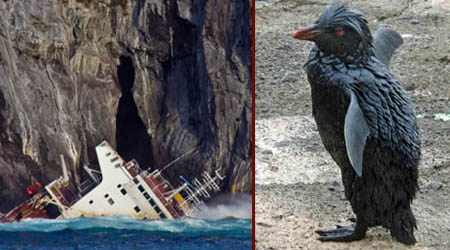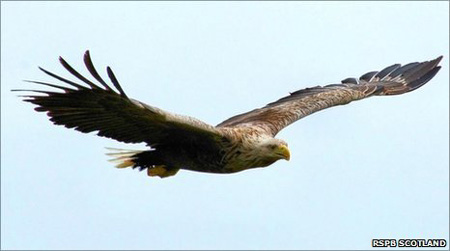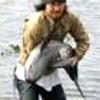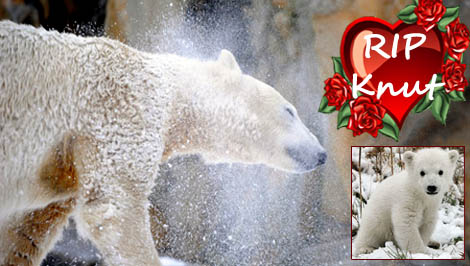|
|
|
National Wildlife Humane Society |
| Wildlife Conservation News |
|
|
|
| NWHS Intro |
| Porpoise Rescue |
| Oiled Penguins |
| RIP Knut |
| Sea Eagles |

National Wildlife Humane Society
A wildlife conservation organization working to preserve and protect threatened and endangered species.
|
| |
|

Nightingale Island Oil Spill, Double Whammy for Endangered Penguins!
Source:Bush Warriors
Last week's MS Olivia shipwreck [March 16, 2011] threatens catastrophic damage to a key population of one of the world's most endangered penguins, a double whammy that includes oil and rats. A 75,300 tonne bulk carrier, called the ‘MS Olivia’, ran aground just off the shores of UK-governed Nightingale Island. After the ship broke in half, at least 800 tonnes of crude oil leaked into the ocean water and experts on the scene now estimate some 20,000 endangered penguins have been covered in oil as a result. Adding to biologists' and conservationists' concerns, rats from the vessel may be making their way to the island, which could be catastrophic for these imperiled birds. Worse yet, much-needed hands, supplies, and food for rescued birds has yet to be sent to the island.
Located roughly 2,816 kilometers (1,750 miles) west of South Africa, Nightingale Island and its surrounding islands are home to the largest population of Northern Rockhopper Penguins, which are listed as ‘Endangered’ on the International Union for the Conservation of Nature (IUCN) Red List of Threatened Species. Northern Rockhoppers on this island chain have declined by as much as 98% over the last 45 years, in some areas. The islands of the Tristan da Cunha Archipelago, the area where the MS Olivia wrecked, holds over 70% of the global population of this species. Nightingale Island holds one of the biggest subpopulations in this area. Birds at nearby World Heritage Sites, Inaccessible and Gough Islands, may also be at risk. In addition to the devastation caused by the oil, biologists are extremely concerned about the potential for rats from the wrecked vessel to invade Nightingale Island. Being prolific and predatory in nature, the introduction of rats has been known to devastate island species, and even driving some to extinction. Birds, in particular, are threatened because the invading rats eat their eggs... Click To View The Entire Article At Bush Warriors NWHS NOTE: This terrible disaster has received very little media coverage, but needs your help! Sandra J. Birnhak, Director of the Foundation for Antarctic Research, and good friend of NWHS, has initiated a donation project at Crowdrise. PLEASE consider a donation of any size, to help Sandra's organization assist in this ecological tragedy. You do not need to be a member of Crowdrise to help. Click To Donate To Assist At Crowdrise |
|
Knut the Polar Bear died of epilepsy - neurologist
Source:Rianovosti
Knut, the star polar bear who became a symbol of the Berlin Zoo, drowned during an epileptic seizure, the Focus Online German news portal quoted a senior neurologist as saying on Saturday [March 26, 2011]. Knut, the first bear born in the Berlin Zoo in 30 years, died unexpectedly on March 19 [2011] after collapsing into the water in his compound. Neurologist Christian Elger of the University of Bonn told Focus Online that Knut's convulsionary movements, which preceded his collapse, were symptoms of an epileptic seizure.
"Those suffering from epilepsy are 23 times more likely to die from drowning," Elger said. The Leibniz Institute for Zoo and Wildlife Research in Berlin is currently examining Knut's brain. According to veterinaries, Knut could have inherited epilepsy from his father Lars who also suffered from epileptic seizures. Knut was born in December 2006 and his mother rejected the cub shortly after his birth. Knut immediately captured the international community's heart and became a world celebrity... Click To View Article At Source |

Sea eagles given more protection
Source:BBC News
Sea eagles are to be given further protection in a new three-year scheme. The £80,000 project involves Scottish Natural Heritage (SNH) working with farmers and crofters to help the birds throughout the areas where they breed. Scotland's sea eagle population has reached a record high since the birds were re-introduced on the Isle of Rum 36 years ago. But they are still considered to be rare with just 52 adult breeding pairs across the country. Sea eagles lay up to three eggs in March with chicks leaving the nest in late July or August. SNH will help to protect the birds, which usually nest in trees.
Stuart Housden, director of RSPB Scotland, said: "We are really pleased to have been involved in the development of workable measures that help support the conservation and management of these magnificent birds." The scheme will focus on agreements with farmers and crofters as well as promoting the birds potential for tourism. Jonnie Hall, head of rural policy for NFU Scotland, said: "The aims and measures of the new scheme clearly reflect the inter-dependence of conservation and farming interests." An advisory panel will be set up to guide SNH on the key priorities. It hopes the scheme will be running by late spring or early summer... Click To View The Source Article |
|
National Wildlife Humane Society Thank-you for allowing us into your email inbox. You are a valued member of NWHS and we look forward to providing you with current news concerning NWHS, other matters concerning wildlife, wildlife habitats and our wildlife rescue/sanctuary facility, "Top Of The Rock". Please invite other concerned humans to join our organization. It is our members that allow us to exist, expand and assist wildlife and precious wild habitat.
Humane is the responsibility of Humanity
FAIR USE NOTICE: This mailing may contain images and excerpts the use of which have not been pre-authorized. This material is made available for the purpose of analysis and critique, as well as to advance the understanding of political, media and cultural issues. All articles and commentary are provided as non-commercial, public educational and outreach content. The 'fair use' of such material is provided for under U.S. Copyright Law. In accordance with U.S. Code Title 17, Section 107, material on this mailing (along with credit links and attributions to original sources) is viewable for educational and intellectual purposes. If you are interested in using any copyrighted material from this mail for any reason that goes beyond 'fair use,' you must first obtain permission from the copyright owner.
Note: NWHS provides hyperlinks from email to third party sites as a convenience to users. NWHS does not endorse such third parties or the contents of any such sites. NWHS has no control over, makes no representation or warranty and disclaims all liability with respect to such sites. To use articles originated by NWHS, please use unaltered and provide a link back to NWHS. http://www.humanewildlife.org/ |
|
To Contact National Wildlife Humane Society
info@humanewildlife.org "A world without wildlife is a world not fit for humans"
Click Here To Visit NWHS Newsletter Archive
| | ||





